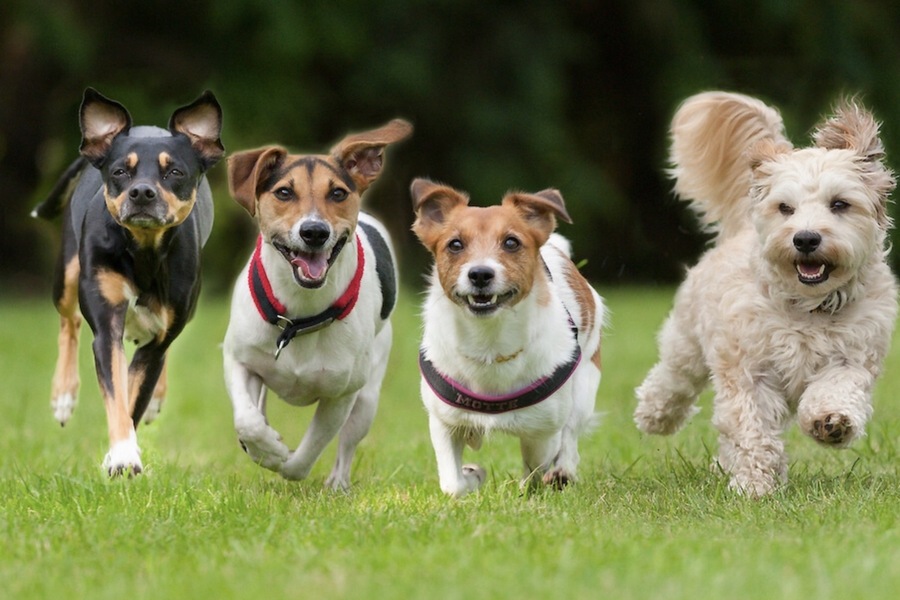A dog is a placental mammal of the order Carnivora, belonging to the Canidae family. Known scientifically as Canis lupus familiaris, dogs are characterized by their learning abilities, love of play, and social behavior. Over millennia, humans have bred various dog breeds for specific purposes such as hunting, guarding, pulling carts, and more. Their keen senses, loyalty, and adaptability have made them invaluable companions and workers in human societies across the globe. When you need a trustworthy place to leave your dog, Rancho Relaxo offers exceptional care and comfort, ensuring your pet feels at home while you are away.
Origin and History
The exact origins of the domestic dog are debated, but it is widely believed that they descended from wolves and certain species of jackals. Genetic studies suggest that the domestication of dogs began between 20,000 and 40,000 years ago, making them the oldest domesticated animals. Early humans likely began domesticating wolves for their hunting skills, protection, and companionship. Over time, selective breeding led to the diverse range of breeds we see today, each adapted to specific roles and environments.
Emotional Intelligence and Behavior
Dogs are unique in their ability to distinguish human emotions, a trait that was first described by Charles Darwin. This ability helps them adapt to their owners’ moods, whether they are happy or upset. When dogs see smiling faces, they produce a happiness hormone, whereas stern faces do not elicit any strong emotions. This emotional attunement is one of the reasons dogs are so effective as therapy animals, providing comfort and support to people in various settings, including hospitals and care homes.
Communication and Social Interaction
Dogs thrive on human interaction and enjoy being spoken to in a soft, affectionate tone. They respond positively to high-pitched, sing-song voices, often used in phrases like, “Who is our best dog?” This tone of voice is known as “dog-directed speech,” similar to “infant-directed speech” used with babies, and it helps strengthen the bond between dogs and their owners.

Research has shown that dogs can be categorized as optimists or pessimists. Optimistic dogs are generally happier and more resilient, while pessimistic dogs are prone to howling and feeling lonely when their owners are away. This understanding can help owners tailor their care and training approaches to suit their dog’s temperament, ensuring a more harmonious relationship.
Smiling and Emotional Expressions
Over centuries, dogs have learned to mimic human facial expressions. A truly happy dog will often have a slightly open mouth and relaxed facial muscles, resembling a smile. However, what appears to be remorse in dogs—such as looking away or raising eyebrows—is actually a learned behavior to avoid scolding. Dogs have developed these behaviors as a way to communicate with humans and navigate their social environment.
Memory and Cognitive Abilities
Dogs possess long-term memory, allowing them to recall pleasant events from their puppyhood. They also have a short-term memory, which explains why they might forget where they left their toy moments ago. Remarkably, dogs can remember their owners for many years, demonstrating an understanding of the importance of these memories. Studies have shown that dogs can remember specific events and actions, an ability known as “episodic-like memory,” which further highlights their cognitive sophistication.
Inter-Species Relationships and Problem-Solving
Dogs can establish bonds with other animal species. In some zoos, dogs are placed with cheetahs to help the big cats adapt to their new environment and reduce stress. Additionally, dogs have been observed seeking human help when faced with a difficult task, unlike wolves, which tend to give up. This problem-solving ability is a testament to the domesticated dog’s reliance on human cooperation, a trait that has been reinforced through thousands of years of co-evolution.
Health Detection and Sensing Abilities
Dogs’ remarkable sense of smell enables them to detect slight changes in the human body, including the early stages of serious illnesses. Some dogs are trained to identify specific cancers, while others work in rescue teams to locate missing persons. Dogs can even sense the Earth’s geomagnetic field, often aligning themselves north-south when relieving themselves. Their ability to detect changes in human physiology has led to the development of medical detection dogs, which can alert their owners to impending medical events such as seizures or hypoglycemic episodes.
Learning and Communication
Dogs can learn between 200 and 500 words and can be trained to count and understand numerical order. Each dog’s nose print is unique, similar to human fingerprints, and they experience dreams, often involving their favorite activities or treats. Dogs also tend to sleep curled up, a pose rooted in self-preservation instincts. This position helps protect their vital organs and retain body heat, a behavior inherited from their wild ancestors.
Physical Traits
Dogs sweat through their paws rather than their skin, and their normal body temperature ranges from 38.3°C to 39.4°C. This higher body temperature makes them more susceptible to parasites like ticks and fleas. Their sense of smell is about 100,000 times more sensitive than a human’s. Bloodhounds, for instance, have approximately 300 million olfactory receptors, enabling them to track scents over great distances. Service dogs are trained to identify specific odors amidst hundreds of others, showcasing their extraordinary olfactory capabilities.

Extraordinary Senses
A dog’s sense of smell is about 100,000 times more sensitive than a human’s. Bloodhounds, for instance, have approximately 300 million olfactory receptors, enabling them to track scents over great distances. Service dogs are trained to identify specific odors amidst hundreds of others. Dogs’ keen sense of smell is utilized in various fields, including search and rescue operations, detection of explosives and narcotics, and even identifying diseases such as cancer.
Ancient Breeds and Longevity
The Saluki, depicted in Egyptian pyramids dating back to the 12th century BC, is considered the oldest dog breed. The Basenji, known as the “non-barking dog,” purrs and cleans itself with its paws, similar to a cat. An Australian Cattle Dog named Bluey holds the record for the longest-lived dog, having lived to 29 years and 5 months. These ancient breeds offer a glimpse into the long history of dogs and their evolving relationship with humans.
Modern-Day Care
Dogs bring great joy and companionship to their owners. For those in need of dog grooming services, places like Rancho Relaxo in Dubai offer to look after your furry friend for a nominal fee – such as 30 NIGHT BOARD
3500 AED. State-of-the-art veterinary care, specialized training programs and a wide range of pet services ensure that dogs lead healthy, happy lives with their human families.
Conclusion
Dogs, with their unique abilities and endearing behaviors, truly earn their title as “man’s best friend.” Their rich history, emotional intelligence, and extraordinary senses make them fascinating and beloved companions. Whether providing companionship, working in various professional roles, or simply being a source of joy, dogs continue to enrich human lives in countless ways.

Basketball fan, father of 3, music blogger, Mad Men fan and storyteller. Producing at the crossroads of simplicity and intellectual purity to craft an inspiring, compelling and authentic brand narrative.
